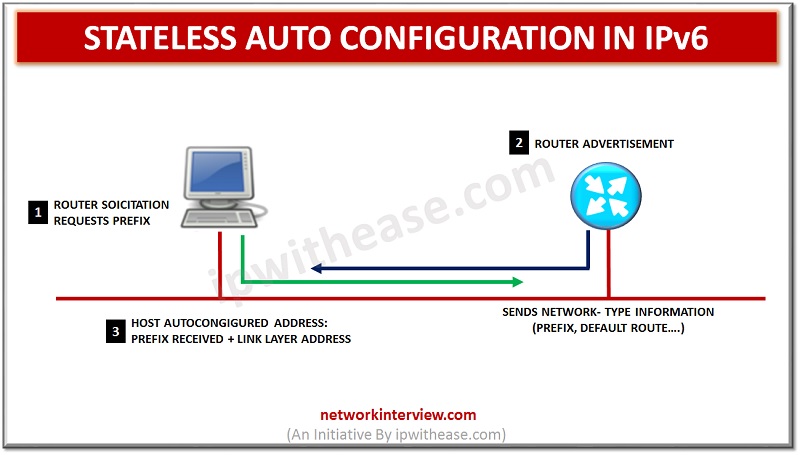
IPv6 Stateless Autoconfiguration
IPv6 Stateless Autoconfiguration enables a local link address which allows the user to access the internet from anywhere. No intermediary IP address or support is needed to be created as the DHCP server. All the devices that are connected with the IPv6 network, have their own unique local address which is automatically verified allowing that particular node or let’s just say a user to communicate with other users on that link. The process of auto configuration means that the addresses, links and other such information are automatically configured.
With the earlier versions, only stateful configuration was possible which involved the necessity of an intermediate presence of a DHCP (Dynamic Host Configuration Protocol) server. But, with the advent of IPv6, there is no such need of this support for connecting the network devices over the internet. The devices are able to automatically generate a local IP address and carry on with their tasks.
This feature became an absolute necessity because of the increased number of devices over the internet in these times. Therefore, with the IPv6, the need of having a DHCP server for IP address allocation is snapped out and instead easing out the process for the network devices.
Heading back to the name, “stateless” means that the DHCP server need not recognize the presence of a network device for allotting it an IP address.
Steps:
The steps that are followed by a device to auto generate the IP address are as listed below:-
- Generation of local link address: A local address is allotted to the device that joins the internet. The address contains 10 bits going as 1111111010 and then follows 54 zeroes and an interface identifier of 64 bits.
- The Uniqueness test: To check the uniqueness of the address, a uniqueness test of the device address is undertaken.
- Address Assignment: Link local address is allotted to the IP interface after clearing the uniqueness test. This link is not usable for internet, but, only for the local network.
- Contact with Router: A local router is contacted by the network device for moving ahead in the process of auto configuration.
- Directions from Router: For the further steps in the configuration process, the device receives the directions from the local router.
- Global Internet Address: A unique global internet address is generated by the device. The router assigns the address which includes the device identifier and network prefix.
Merits of IPv6 Stateless Auto Configuration:
The advantages of stateless auto configuration are as follows:-
- The presence of a Dynamic Host Configuration Protocol (DHCP) is not required for the IP address assignment.
- No manual configuration of network devices is required on the network. The devices can immediately connect and auto configures IP addresses on the network.
- The stateless auto configuration is economical as the need of a proxy server or a DHCP server is evicted.
- It facilitates high speed communication and data transportation over the internet.
- It is compatible with wireless networks.
Demerits of Stateless Auto Configuration:
- For the host to check whether the address is already in use or unique, more bandwidth use is needed.
- To prevent the auto configuration from happening, a DOS attack can be made by any unethical user or attacker.
- Until a dynamic DNS is used, the auto-configured address cannot be name served.
Application:
Due to the influx of network devices over the internet, the advent of stateless auto configuration was bound to be made. It not only eases out the process of connection of network devices over the internet, but, also enables usage of wireless networks and permits multiple other network devices to access the internet from any hotspots of the world.
This feature of IPv6 has a variety of applications in communication and networking of digital devices like refrigerators, televisions, microwaves, washing machines and many more such devices with the internet. The plugging of the device to the internet has just become a matter of time taken in blinking of an eye and with this feature has also escorted a brand new era of Internet of Things wherein almost all of the electronic devices would be able to connect through the internet.
Related – Features of IPv6 Addressing
Tag:Protocols



